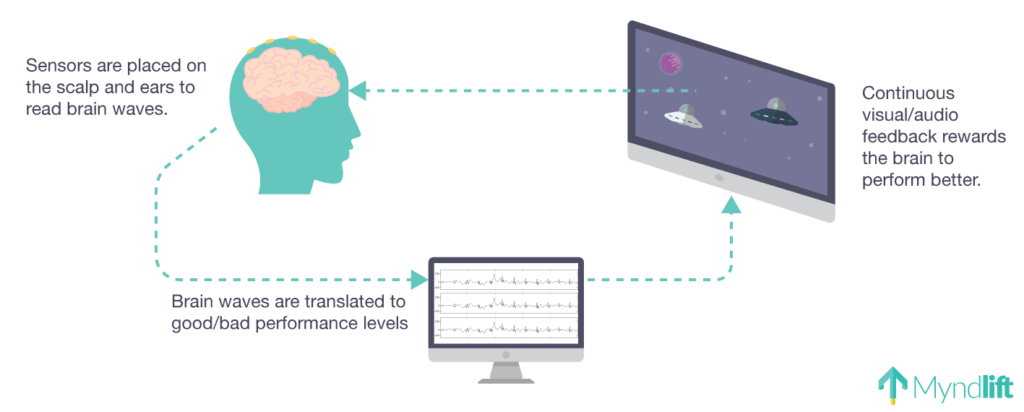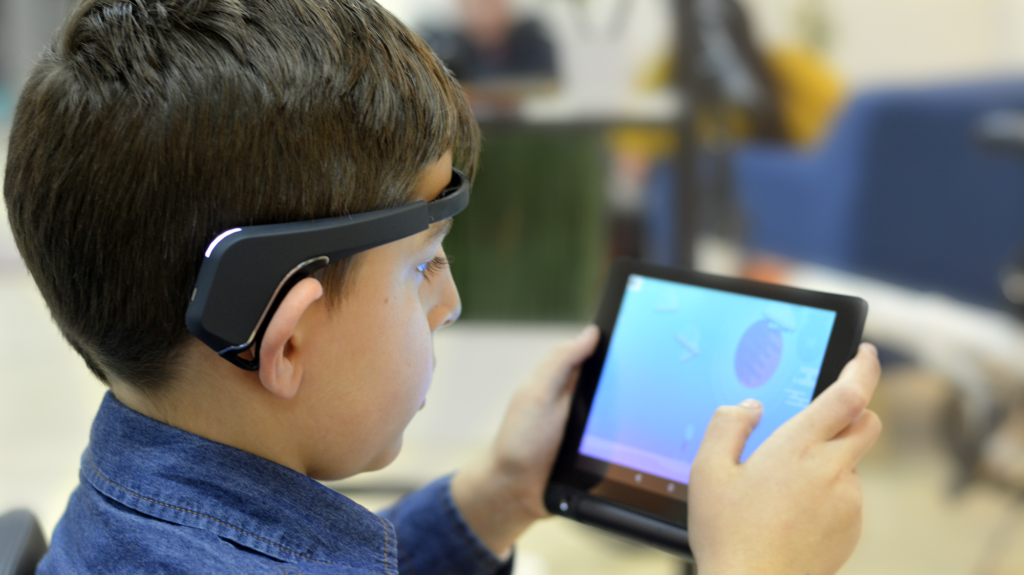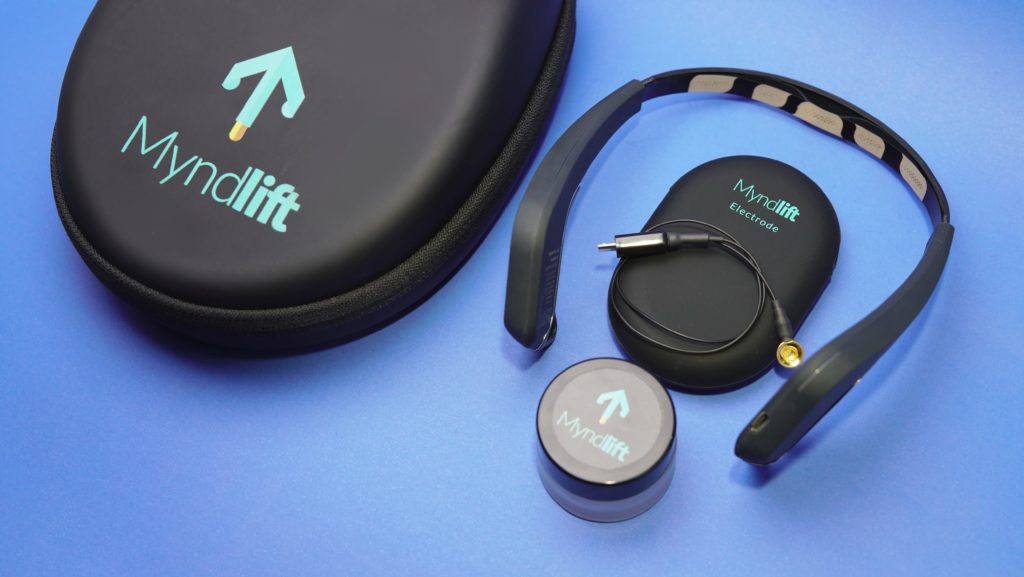Bull City Psychotherapy now offers neurofeedback services!
What is neurofeedback?
Electroencephalography (EEG) neurofeedback is a type of biofeedback therapy which measures and records the brain waves. The user receives visual or auditory feedback which help to train the brain to better regulate its activity. Neurofeedback has been used in clinics around the world for decades, and clinical research has shown it to be effective in treating many neurological conditions with lasting results. You can refer to this online presentation to learn more about it: link

Neurofeedback therapy from home:
Neurofeedback can be done remotely using a wearable device and a mobile app while your clinician monitors your brain activity and progress remotely. By downloading the Myndlift app and using a Muse headset, you’ll be able to train remotely with close clinical supervision.
See what training looks like in this video.

What is used in the training?
Myndlift neurofeedback training requires an EEG headset that is placed on the head. Once connected, you can start playing games that are controlled by your brainwaves. Through playing these games, your brain will learn to better regulate itself.

Is neurofeedback safe?
Yes. Neurofeedback is a non-invasive technique which helps a person learn how to control, or self-regulate, their brain waves. The headset is simply used to listen to and record the brainwaves, it doesn’t transmit or otherwise change anything in the brain. Through the process of simply wearing the headset and playing the games the brain will teach itself to better regulate its activities.
What is the evidence behind neurofeedback?
Neurofeedback was first discovered in the 1950’s as a form of operant conditioning, in which the brain changes its activities as as result of stimuli, or positive or negative feedback.
Research behind Neurofeedback for ADHD
The impact of neurofeedback on ADHD has been studied the most among all neurofeedback therapies. Many studies have been published over the years, we chose few recent ones to show you:
2009:
102 children aged 8-12 with an ADHD diagnosis were randomly assigned in two groups- one group did 36 neurofeedback sessions, the other did 36 sessions of computerized attention skills training game.
Findings:
Improvements in the neurofeedback group were superior to the control group. The findings indicated that “neurofeedback effects are substantial and of practical importance. Our results confirm findings of previous neurofeedback studies even under strict control conditions.” The researchers concluded the result “indicates clinical efficacy of neurofeedback in children with ADHD”.
2012:
130 children diagnosed with ADHD aged 6-18 were randomly assigned into 3 groups – one received neurofeedback, one received medication (methylphenidate), one received both neurofeedback and medication.
Findings:
The researchers conclude that “NF produced a significant improvement in the core symptoms of ADHD, which was equivalent to the effects produced by MPH (methylphenidate), based on parental reports. This supports the use of NF as an alternative therapy for children and adolescents with ADHD.”
2012:
American Academy of Pediatrics rated neurofeedback as a Level 1 “Best Support” Intervention for ADHD. This is highest possible rating and at the same level as medication treatment and behavioral therapy.
2014:
104 children were randomly assigned to receive NF (neurofeedback), cognitive training or a control condition. They were also evaluated 6 months post-intervention.
Findings:
“Neurofeedback participants made more prompt and greater improvements in ADHD symptoms, which were sustained at the 6-month follow-up, than did CT participants or those in the control group. This finding suggests that neurofeedback is a promising attention training treatment for children with ADHD.”
Myndlift Neurofeedback is therapist-guided, which means clinicians provide personalized supervision, whether in-clinic or remotely.
To learn more, contact neurofeedback@bullcitypsychotherapy.com.
